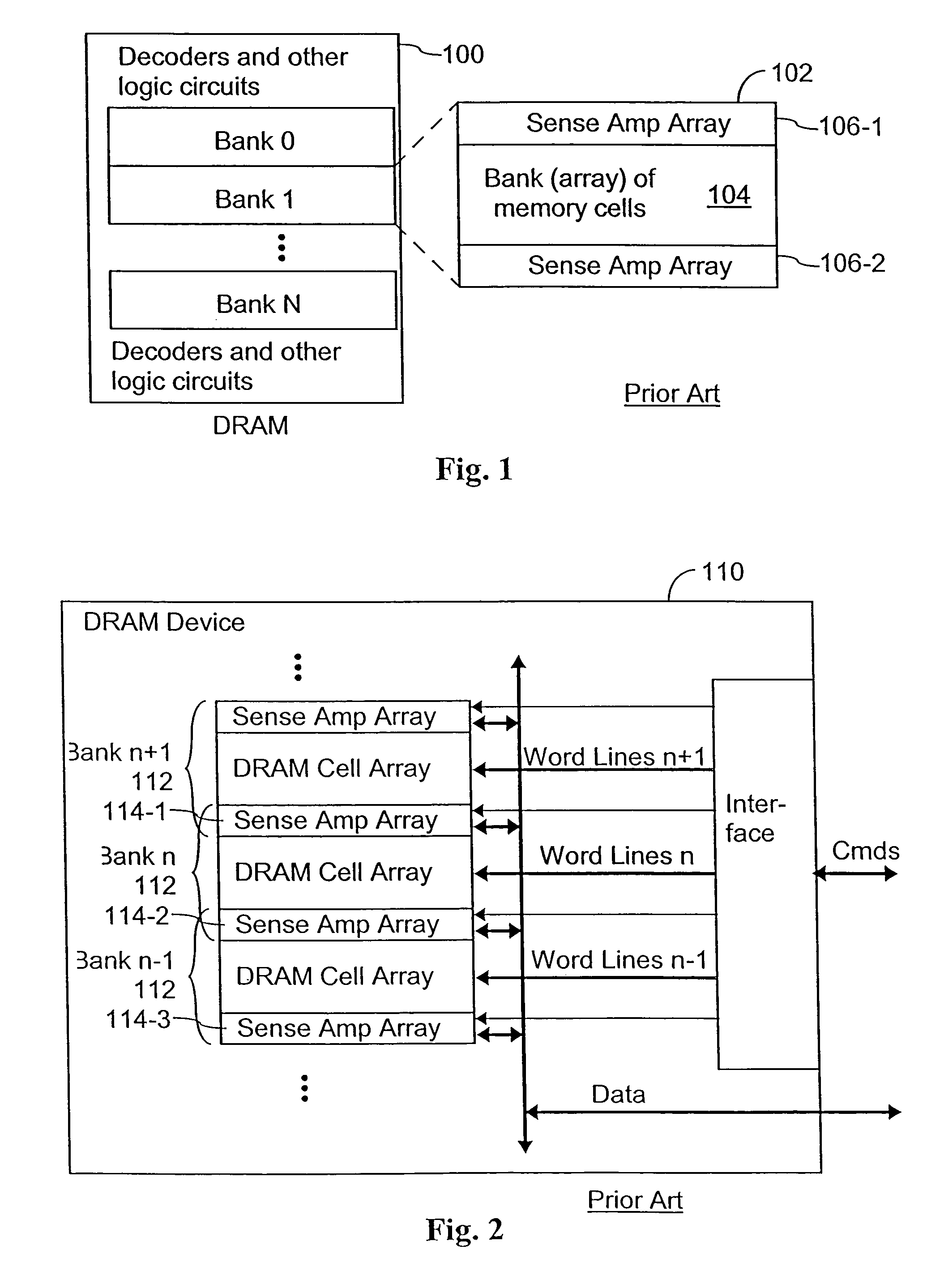Memory controller with power management logic
a memory controller and logic technology, applied in the direction of memory adressing/allocation/relocation, instruments, liquid/fluent solid measurement, etc., can solve the problems of high latencies and the inability of the dependent bank to operate independently of its neighbors
- Summary
- Abstract
- Description
- Claims
- Application Information
AI Technical Summary
Benefits of technology
Problems solved by technology
Method used
Image
Examples
Embodiment Construction
[0029]As indicated in the summary, depending on the particular memory devices being controlled, the number of possible power states and the exact definition of those power states will vary, but will generally includes at least a first (active) state, a second (mid-power) state, and a third (low power) state, where the second power state uses less power than the first power state, and the third power state uses less power than the second. While the invention will be described with respect to Active, Standby and Nap states, in other implementations these power states may be replaced by first, second and third power states, as well as other additional power states, whose definitions are different from those of Active, Standby and Nap.
[0030]Referring to FIG. 3, a memory device in the Active state may be “relaxed” to the Standby state to reduce power consumption, and then put in a Nap state to further reduce power consumption. Any memory device in the Standby state may transition directl...
PUM
 Login to View More
Login to View More Abstract
Description
Claims
Application Information
 Login to View More
Login to View More - R&D
- Intellectual Property
- Life Sciences
- Materials
- Tech Scout
- Unparalleled Data Quality
- Higher Quality Content
- 60% Fewer Hallucinations
Browse by: Latest US Patents, China's latest patents, Technical Efficacy Thesaurus, Application Domain, Technology Topic, Popular Technical Reports.
© 2025 PatSnap. All rights reserved.Legal|Privacy policy|Modern Slavery Act Transparency Statement|Sitemap|About US| Contact US: help@patsnap.com



